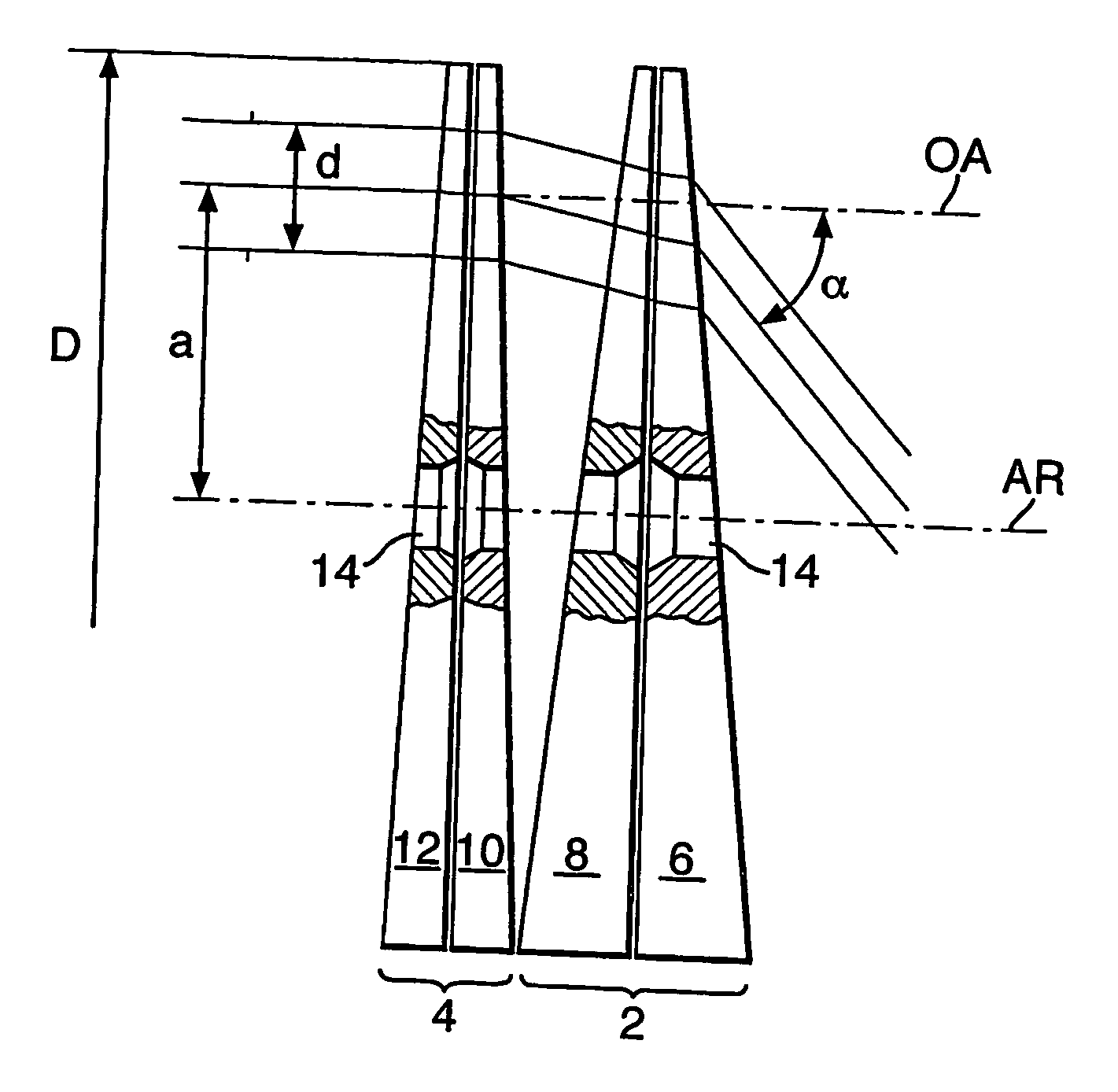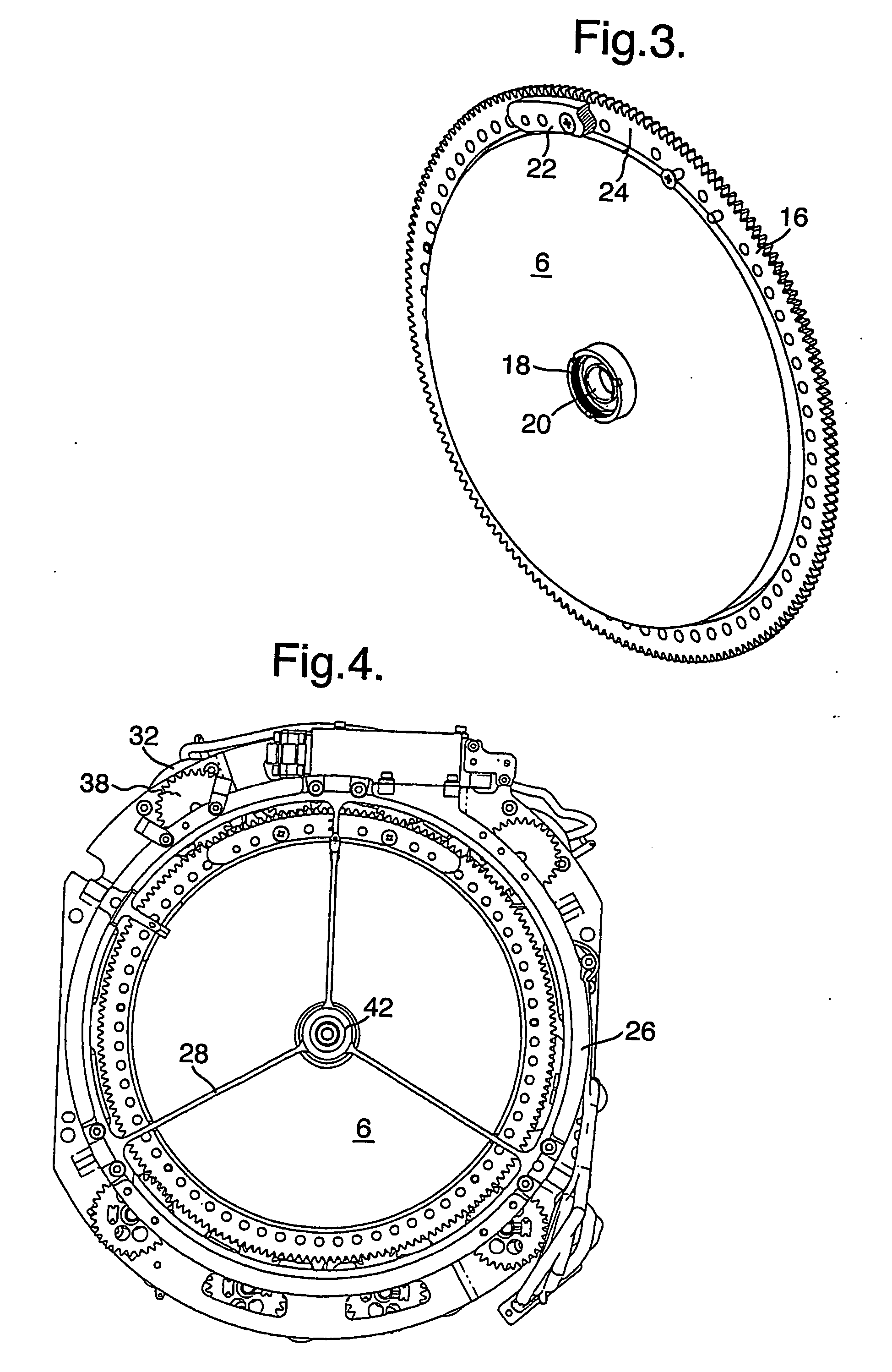Rotary wedge scanner
a scanner and wedge-type technology, applied in the field of rotary wedge-type scanners, can solve the problems of reduced attainable speed and accuracy, reduced space requirements, and reduced space requirements, so as to reduce space requirements and the effect of reducing weight and power consumption
- Summary
- Abstract
- Description
- Claims
- Application Information
AI Technical Summary
Benefits of technology
Problems solved by technology
Method used
Image
Examples
Embodiment Construction
[0022] Referring now to the drawings, there are seen in FIG. 1 two pairs of optical wedges, a front pair of optical wedges 2 comprising two identical wedges and a rear pair of optical wedges 4, also comprising two identical wedges. Wedges 6, 8, 10 and 12 of the two pairs are advantageously made of silicon, because of its relatively high index of refraction. In the illustrated embodiment of the invention, the apex angle of wedges 6 and 8 is 5.9° and the apex angle of wedges 10 and 12 is 2.6°. Other apex angles are possible, as well as other high index of refraction optical materials besides silicon.
[0023] One of the principal differences between the prior-art wedge scanners and that of the present invention resides in the fact that in the former, the bearings that permit the wedges to rotate are large, peripheral ones, the disadvantages of which have already been discussed above, while the wedges of the scanner of the present invention rotate about small, central bearings. According...
PUM
 Login to View More
Login to View More Abstract
Description
Claims
Application Information
 Login to View More
Login to View More - R&D
- Intellectual Property
- Life Sciences
- Materials
- Tech Scout
- Unparalleled Data Quality
- Higher Quality Content
- 60% Fewer Hallucinations
Browse by: Latest US Patents, China's latest patents, Technical Efficacy Thesaurus, Application Domain, Technology Topic, Popular Technical Reports.
© 2025 PatSnap. All rights reserved.Legal|Privacy policy|Modern Slavery Act Transparency Statement|Sitemap|About US| Contact US: help@patsnap.com



